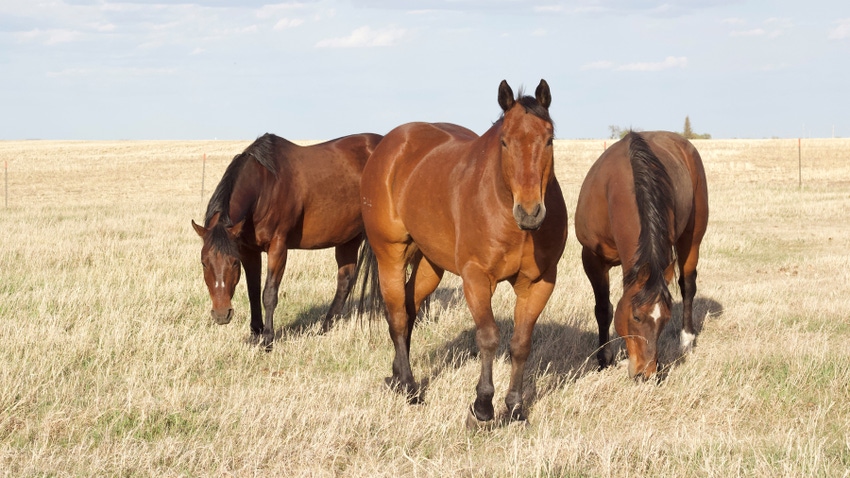
Flies are a common annoyance to horse owners, but an unchecked fly population can transmit disease and cause health problems in animals. Both biting and non-biting flies pose a risk to horses and humans.
Managing moist organic debris sources including manure and bedding, rotten feed, and mud can make the largest impact to fly populations. Pests will either bite or land on the animal, increasing risk of transmitting diseases such as anthrax, anaplasmosis and equine infectious anemia.
Types of flies
Tail swishing, pacing or skin twitching can be seen in horses experiencing fly agitation. With thousands of fly species, knowing which ones are plaguing your animals can help you select the best control method.
Some flies feed off blood or bodily fluids. They can typically be found targeting the ears, neck, chest or belly of the animal. Biting flies such as black flies, horn flies, stable flies and horse flies contribute to lameness issues, as horses paw or stomp at the flies on their legs. Other flies contaminate surfaces and feed on bodily secretions.
Controlling flies starts with good sanitation practices in the environment:
Tidy up the barn. Keep the barn clean by picking up manure often. Replace stall bedding weekly and minimizing standing water will reduce fly populations. Ensure feed stays dry by clearing waste feed and avoiding feeding grain on the ground. Place waterers in well-drained areas away from where your horses are fed, and keep the waterers in good repair.
Use insecticides. Insecticides can add effectiveness to a pest control plan but cannot make up for debris management. Pyrethrum or resmethrin fogs and sprays can be used to kill adult flies in indoor barns and arenas for temporary relief.
Pyrethroid and organophosphate sprays can be used both inside and outside of the barn, and are effective for up to three weeks. Pesticides should always be applied according to label directions when used around animals.
Set out traps. Sticky traps and ultraviolet traps will catch and kill stable and house flies, while baited traps will attract and kill house flies.
Inspect water. Black flies and horse flies are not well-controlled by traps but instead by proper management of on-site water sources. Keep stagnant water from forming in buckets, old tires or other places that may collect water.
Suit up your horse. Depending on the number of horses, fly gear can reduce effects of flies on the animal’s health. Fly boots will keep biting flies off of legs and can be worn 24/7 to minimize stomping and pacing. Fly blankets keep flies off of the body of the horse, and some styles feature a belly strap to protect this area of the horse.
Tail bags can also be used on horses with shorter tails, to better allow them to swat at flies themselves. This equipment can be used with insecticidal fly spray applied directly to the animal for best protection.
DIY fly repellents. Homemade fly repellents usually include water, vinegar, bath oil, plant oils and other herbal extracts if an organic method is desired. Owners should apply repellents to the legs and bellies of the animal, where flies are most likely to attack. Reapplication should occur if the animal becomes wet or sweaty.
Protecting your horses from the discomfort of flies can be easily done by incorporating these methods into your equine facility management.
University of Minnesota Extension and Merck Animal Health contributed to this article.
About the Author(s)
You May Also Like






